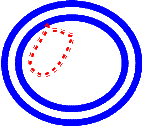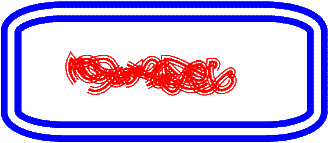|
A Bacteria: with undeveloped nuclear
region.
A Typical Animal's
Cell: with well developed nucleus.
Endoplasmic Reticulum
Mitochondria
Nucleus (dude)
Fat or Golgi Bodies
|
||
Above is an example of how
the living world is dived into two distinguished groups. At the
higher level, All organisms must be identified either as eukaryotes
or prokaryotes.
|
||
| Characteristics | Prokaryotes | Eukaryotes |
| Nucleus | Absent | Present with nuclear membrane |
| DNA | Open. Single closed loop, not associated with protein. | Multiple chromosomes, tightly coiled and supported with proteins. |
| Ribosome ( site of protein synthesis) | Smaller (50s/30s=70s) | Larger (60s/40s=80s) |
| If you are really interested to how the living world is classified and what happened to the viruses, please visit this page. | ||


